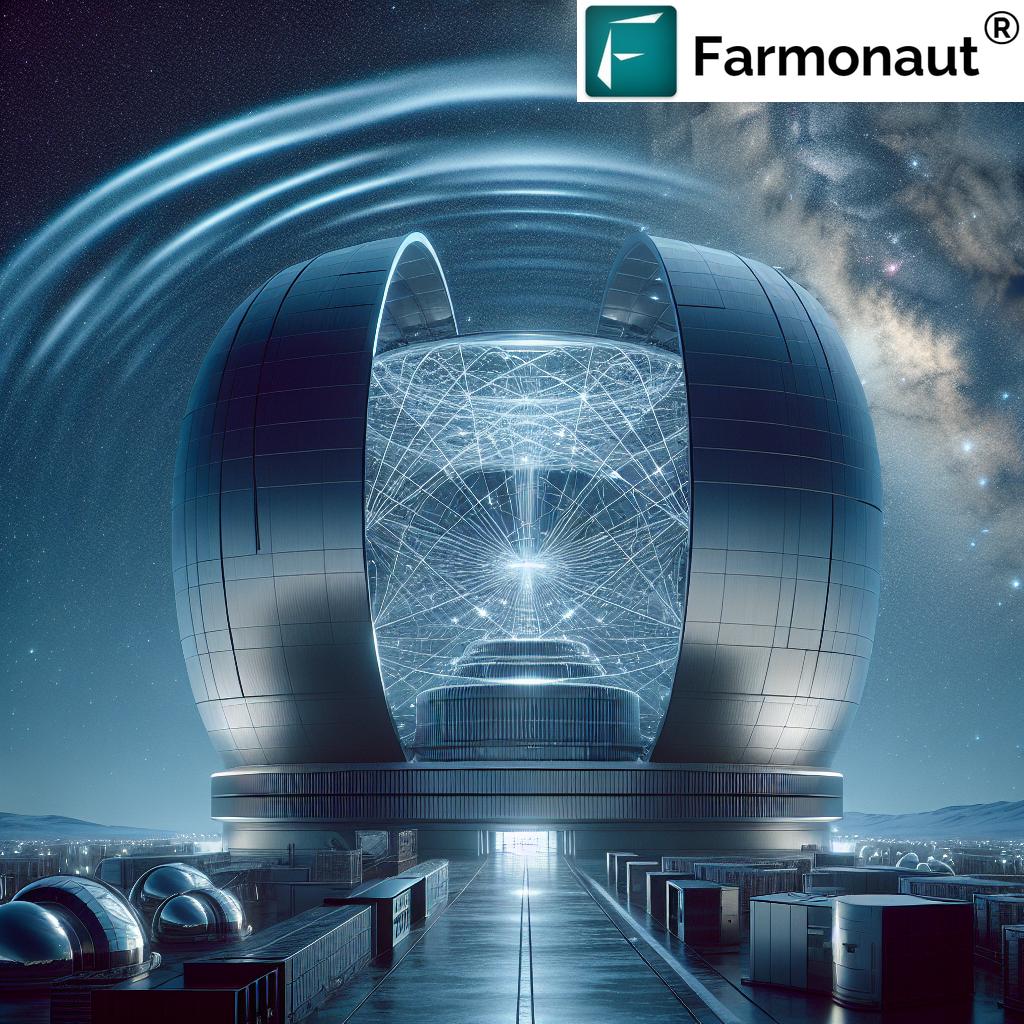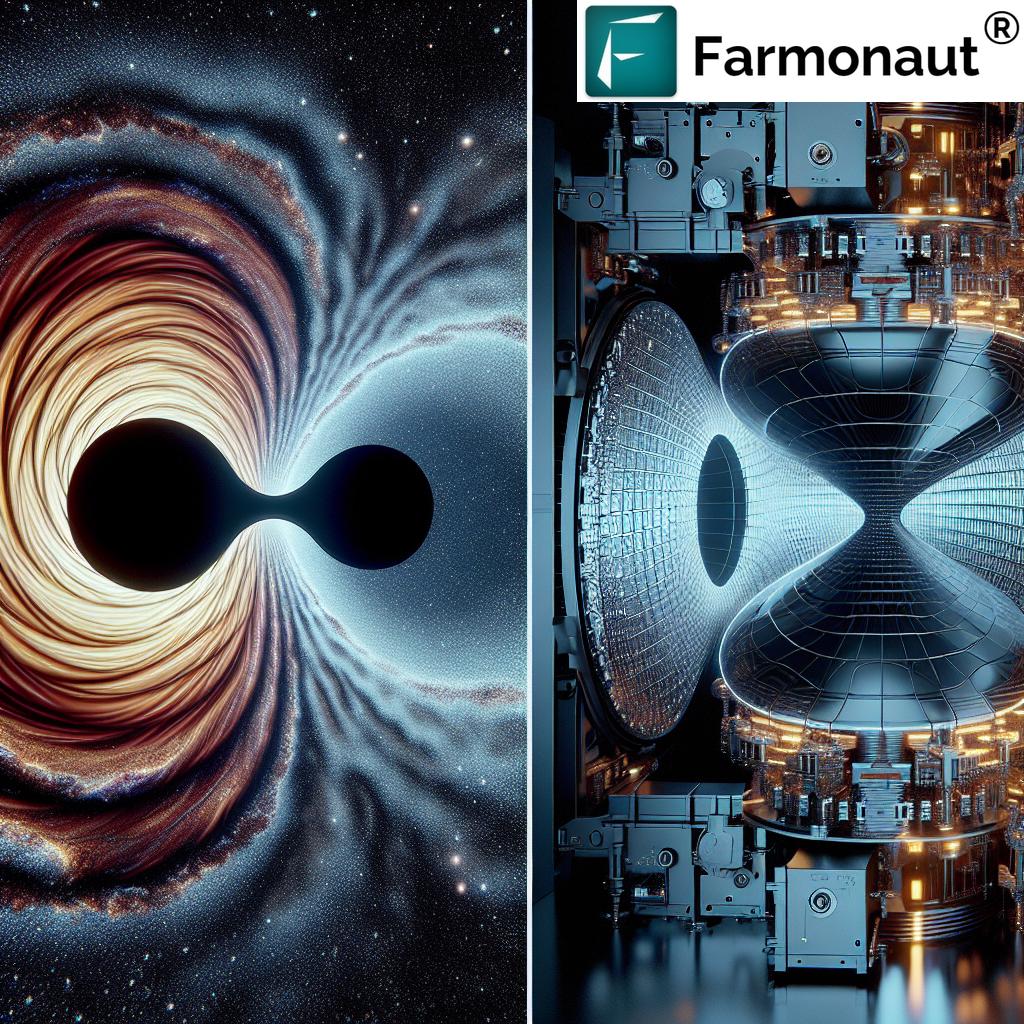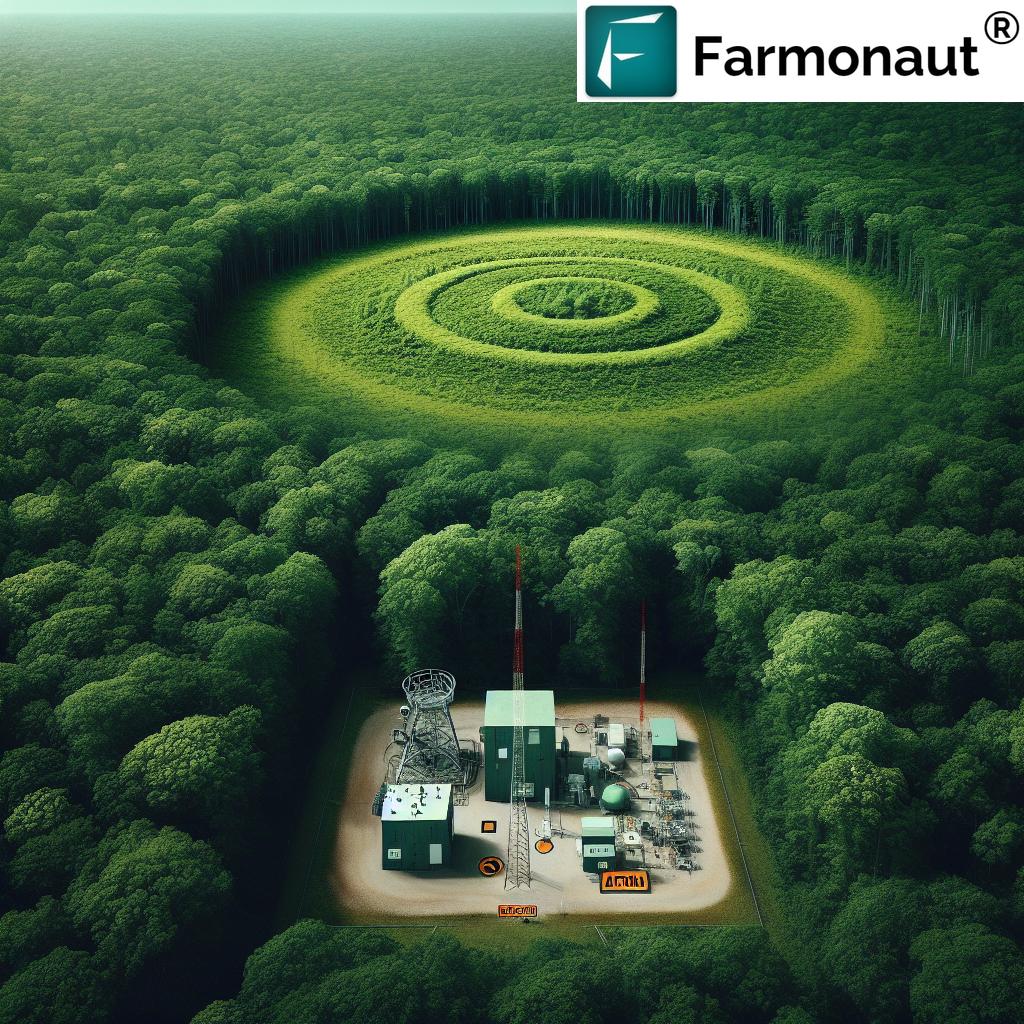Unlocking the Universe: How California’s Laser Interferometer Technology Revolutionizes Gravitational Wave Detection
“California’s laser interferometer technology achieves unprecedented laser power levels exceeding 1 megawatt for gravitational wave detection.”
In the heart of California, a groundbreaking advancement in optical technology is reshaping our understanding of the universe. We, as scientists and enthusiasts, stand on the brink of a new era in gravitational wave detection, one that promises to unveil the secrets of the cosmos like never before. This revolutionary approach enhances laser interferometer technology, pushing the boundaries of what’s possible in observing the most extreme events in our universe.
At the forefront of this cosmic revolution is the Laser Interferometer Gravitational-Wave Observatory (LIGO), a marvel of modern science that has already opened a new window to the universe. But as we peer deeper into space and time, we find ourselves hungry for more. The quest for knowledge drives us to innovate, to push beyond the current limitations of our instruments, and to dream of observatories that can see further back in time than ever before.
The Dawn of a New Era in Gravitational Wave Detection
Since 2015, observatories like LIGO have been our cosmic ears, listening to the symphony of the universe. These incredible instruments have detected the ripples in spacetime caused by some of the most violent events in the cosmos, such as the mergers of black holes and neutron stars. But we’re not content to rest on our laurels. The future beckons, and with it comes the promise of even more astonishing discoveries.
Plans are already in motion to upgrade the existing 4-kilometer LIGO detectors and to construct a next-generation 40-kilometer observatory known as Cosmic Explorer. These ambitious projects aim to push the gravitational-wave detection horizon to the earliest times in the history of the universe, before the first stars even formed. It’s a goal that, if achieved, would revolutionize our understanding of the cosmos.

The Power of Light: Breaking the Megawatt Barrier
At the core of this leap forward is the achievement of laser power levels exceeding 1 megawatt, a feat that seemed impossibly out of reach not long ago. This incredible increase in power is essential for detecting the faintest whispers of gravitational waves from the farthest reaches of the universe. But with great power comes great challenges, and that’s where our innovative approach to adaptive optics comes into play.
Our research team, led by Jonathan Richardson of the University of California, Riverside, has demonstrated a breakthrough that will enable gravitational-wave detectors to reach these extreme laser powers. We’ve developed a new low-noise, high-resolution adaptive optics approach that can correct the limiting distortions of LIGO’s main 40-kilogram mirrors. These distortions arise with increasing laser power due to heating, and overcoming them is crucial to pushing the boundaries of detection.
The Science Behind the Discovery
Gravitational waves are a relatively new way for us to observe the universe. Predicted by Einstein’s equations of general relativity, these waves are distortions in the fabric of spacetime that propagate outward from massive accelerating or colliding objects in the universe. Like ripples in a cosmic pond, they carry energy and information about the extreme events that created them.
LIGO, one of the largest pieces of scientific equipment in the world, consists of two 4-kilometer-long laser interferometers. These incredible instruments, located in Washington State and Louisiana, operate in tandem, passively listening for any distortions of spacetime that might propagate through Earth as a gravitational wave.
To date, LIGO has detected about 200 events of stellar mass compact objects colliding and merging. The majority of these have been mergers of two black holes, but we’ve also observed mergers of neutron stars. Each detection brings us closer to understanding the fundamental nature of our universe and the objects that inhabit it.
Pushing the Boundaries: The Role of Adaptive Optics
Our focus at the University of California, Riverside, is on developing new types of laser adaptive optical technology to overcome very fundamental physics limitations to how sensitive we can make detectors like LIGO. Across the majority of gravitational wave signal frequencies we can see from the ground, sensitivity is limited by quantum mechanics—specifically, by the quantum properties of the laser light itself that we use in the interferometer to bounce off mirrors.
The instrument we’ve developed in our lab is designed to deliver precision optical corrections directly to the main mirrors of the LIGO interferometers. It sits just centimeters in front of the reflective surface of these mirrors and projects very low noise corrective infrared radiation onto the front surface of the mirror. This approach uses non-imaging optical principles, a technique that has never been used in gravitational wave detection before.
Explore precision agriculture with Farmonaut’s web app for advanced farm management.

The Future of Cosmic Exploration: Cosmic Explorer
Cosmic Explorer represents the next giant leap in gravitational-wave observation. This U.S. concept for a next-generation observatory will be 10 times the size of LIGO, with 40-kilometer-long interferometer arms. It will be the largest scientific instrument ever built, capable of peering back to a time when the universe was just 0.1% of its current age.
At their design sensitivity, these detectors will see the universe at earlier times than when the first stars are believed to have formed. We will be able to see a snapshot of the universe at a very early stage in time, potentially unlocking secrets about the formation of the cosmos itself.
| Technology Feature | Previous Generation | Current Generation | Future Generation (Cosmic Explorer) |
|---|---|---|---|
| Laser Power | 100 kilowatts | 1+ megawatt | 5+ megawatts (estimated) |
| Mirror Distortion Correction | Limited | Advanced adaptive optics | Next-gen precision correction |
| Detection Sensitivity | Local galaxy cluster | Distant galaxies | Early universe |
| Observable Cosmic Events | Black hole mergers | Neutron star collisions | Pre-star formation phenomena |
“Next-generation observatories like Cosmic Explorer aim to resolve fundamental questions about universe expansion rates and extreme astrophysical objects.”
Implications for Physics and Cosmology
Our research promises to answer some of the deepest questions in physics and cosmology. We’re on the cusp of potentially resolving the conflicting measures of the local expansion rate of the universe, a puzzle that has long perplexed cosmologists. Gravitational waves offer a new, independent method to measure this crucial cosmological parameter.
Moreover, these advancements will provide exquisitely high precision measurements of the detailed dynamics around the event horizons of black holes. This will allow us to make direct tests of classical general relativity and explore alternative theories of gravity, potentially reshaping our understanding of the fundamental laws that govern our universe.
The Role of Quantum Mechanics in Astronomy
As we push the boundaries of gravitational wave detection, we find ourselves at the intersection of the very large and the very small. Quantum mechanics, typically associated with the behavior of particles at the atomic scale, plays a crucial role in the sensitivity of our detectors. The quantum properties of laser light itself become a limiting factor in our observations.
This convergence of quantum mechanics and astronomy opens up new avenues for research and technological development. By harnessing quantum effects and developing new quantum-limited measurement techniques, we may be able to further enhance the sensitivity of our detectors, pushing our observational capabilities to new heights.
Access Farmonaut’s powerful API for satellite and weather data integration.
Unveiling the Mysteries of Black Hole Mergers
One of the most exciting prospects of enhanced gravitational wave detection is the ability to observe and study black hole mergers in unprecedented detail. These cosmic collisions, among the most energetic events in the universe, offer a unique laboratory for testing general relativity in extreme conditions.
With improved sensitivity and precision, we’ll be able to detect a wider range of black hole mergers, from stellar-mass black holes to the supermassive black holes at the centers of galaxies. This will help us understand the formation and evolution of black holes across cosmic time, shedding light on the growth of galaxies and the structure of the universe.

Spacetime Distortions: A New Window into the Cosmos
The study of spacetime distortions through gravitational waves offers a completely new way of observing the universe. Unlike electromagnetic radiation, which can be absorbed or scattered by matter, gravitational waves pass through the universe almost entirely unimpeded. This means we can observe events and phenomena that are invisible to traditional telescopes.
By analyzing the precise patterns of these spacetime ripples, we can infer information about the objects that created them, their masses, spins, and even their location in the universe. This opens up the possibility of multi-messenger astronomy, where we combine gravitational wave observations with traditional electromagnetic observations to gain a more complete picture of cosmic events.
Explore Farmonaut’s API Developer Docs for seamless integration of agricultural data.
Testing General Relativity in Extreme Conditions
Einstein’s theory of general relativity has stood the test of time for over a century, but there are still aspects of the theory that remain untested in extreme conditions. Gravitational wave observations from events like black hole mergers provide a unique opportunity to test general relativity in the strong-field regime, where the effects of gravity are most pronounced.
By comparing the observed gravitational wave signals with predictions from general relativity, we can search for any deviations that might indicate the need for modifications to the theory or hint at new physics beyond our current understanding. This could have profound implications for our understanding of gravity, spacetime, and the fundamental nature of the universe.
Resolving the Universe Expansion Rate Controversy
One of the most pressing questions in modern cosmology is the discrepancy between different measurements of the universe’s expansion rate, known as the Hubble constant. Current methods using cosmic microwave background observations and measurements of distant supernovae give conflicting results, leading to what’s known as the “Hubble tension.”
Gravitational wave observations offer a new, independent method to measure the Hubble constant. By detecting gravitational waves from neutron star mergers and identifying their electromagnetic counterparts, we can obtain a precise measurement of the expansion rate. This could potentially resolve the Hubble tension and provide crucial insights into the nature of dark energy and the fate of the universe.
Download Farmonaut’s mobile apps for on-the-go farm management:


The Promise of Unexpected Discoveries
Perhaps the most exciting aspect of pushing the boundaries of gravitational wave detection is the potential for unexpected discoveries. Throughout the history of astronomy, whenever we’ve developed new ways to observe the universe, we’ve invariably discovered phenomena that were completely unanticipated.
As we extend our gravitational wave observations to earlier cosmic times and higher sensitivities, we may detect signals from entirely new classes of objects or phenomena. These could range from exotic compact objects like boson stars to echoes of the early universe that could shed light on the nature of inflation and the origins of the cosmos.
The Road Ahead: Challenges and Opportunities
While the future of gravitational wave astronomy looks incredibly bright, there are still significant challenges to overcome. Achieving the laser power levels and sensitivity required for next-generation detectors will require continued innovation in optics, materials science, and quantum measurement techniques.
Additionally, as we push to detect fainter signals, distinguishing real gravitational wave events from background noise becomes increasingly challenging. This will require advances in data analysis techniques, including the potential application of machine learning and artificial intelligence to sift through the vast amounts of data produced by these detectors.
Conclusion: A New Era of Cosmic Exploration
The advancements in laser interferometer technology and adaptive optics are ushering in a new era of gravitational wave astronomy. As we stand on the brink of this exciting frontier, we can anticipate a wealth of discoveries that will reshape our understanding of the universe, from the nature of black holes and neutron stars to the fundamental properties of spacetime itself.
The journey ahead is filled with promise and potential, offering us the chance to peer further back in time than ever before and potentially uncover phenomena that we’ve yet to even imagine. As we continue to push the boundaries of what’s possible, we move closer to unlocking the deepest secrets of the cosmos, one gravitational wave at a time.
Earn with Farmonaut: Join our affiliate program and help farmers while growing your income!
Earn 20% recurring commission with Farmonaut’s affiliate program by sharing your promo code and helping farmers save 10%. Onboard 10 Elite farmers monthly to earn a minimum of $148,000 annually—start now and grow your income!
FAQs
- What are gravitational waves?
Gravitational waves are ripples in the fabric of spacetime caused by some of the most violent and energetic processes in the universe, such as the collision of black holes or neutron stars. - How does LIGO detect gravitational waves?
LIGO uses laser interferometry to detect tiny changes in the distance between mirrors caused by passing gravitational waves. It consists of two L-shaped detectors with 4-kilometer long arms. - What is the significance of achieving megawatt laser power in gravitational wave detectors?
Higher laser power allows for more precise measurements and the ability to detect fainter gravitational wave signals from more distant sources or earlier in the universe’s history. - How will Cosmic Explorer improve upon current gravitational wave detectors?
Cosmic Explorer will have 40-kilometer long arms, ten times longer than LIGO, allowing for much greater sensitivity and the ability to detect gravitational waves from the very early universe. - What kinds of new discoveries might be possible with improved gravitational wave detection?
Improved detection could lead to discoveries about the early universe, the nature of dark matter and dark energy, and potentially reveal new types of astrophysical objects or phenomena we haven’t yet imagined.


















